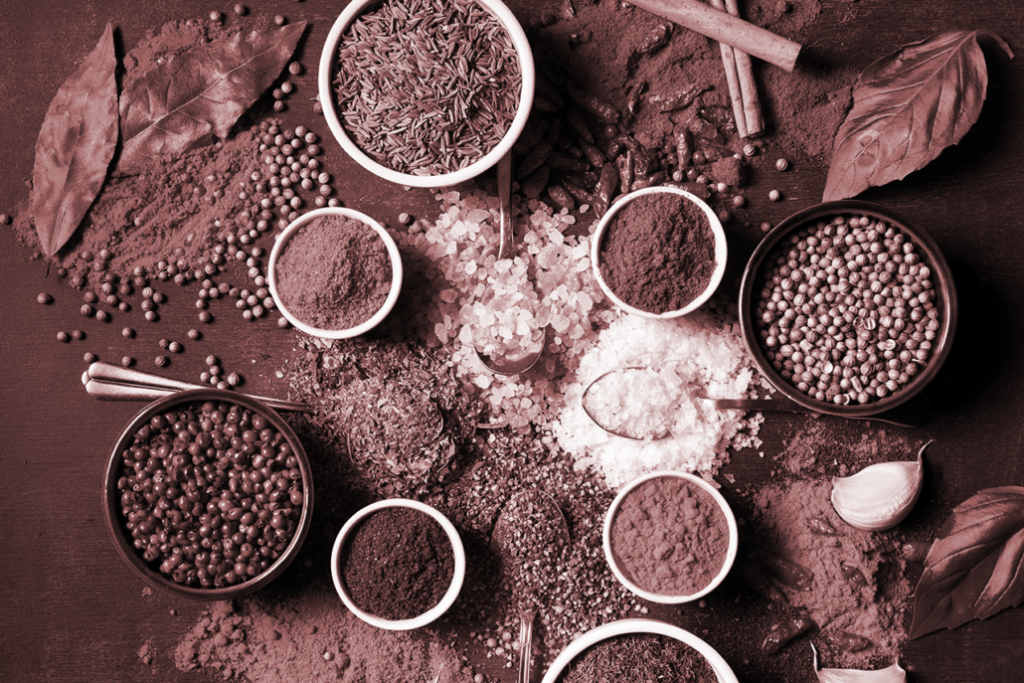History Of Indian Spice

ORIGIN OF SPICES IN INDIA
The genesis of almost all the spices was from India and the organic spices manufacturers in India are proud to be a part of this legacy.
In ancient times sourcing a divergent assortment of spices from India was both strenuous and risky. It meant commencement on long and difficult sea voyages ‐ as well as the resistance of vigorous competition from other robust empires anxious to dominate spice trade.
Arab traders proficiently withheld the original sources of the spices they sold. To please the curious, to preserve their market, and to lose the enthusiasm of competitors, they spread fantastic tales to the effect that cassia grew in shallow lakes safeguarded by gliding animals and that cinnamon grew in deep narrow valley infested with poisonous snakes. These entire tales have been evidently formulated for the purpose of enhancing the price of spices.
Transcontinental trade routes across Asia were mainly via sea due to which the spices trade was enlarged. Prior to the Christian era, Arab traders were sailing directly to spice‐producing lands. The Chinese in East Asia crossed the waters of the Malay Archipelago to merchandise in the spices Islands (the Moluccas or the East Indies). Sri Lanka was another major trading point.
Despite the origins of spices being well known throughout Europe by the middle ages, none of the rulers manifested of breaking the Venetian hold on the trade routes. By the end of the 15th century, however, explorers began to construct ships and venture abroad in search of advanced ways to reach the spice-producing regions. So began the famed voyages of discovery. In 1491 John Cabot sailed on behalf of England, and in 1492 Christopher Columbus sailed under the flag of Spain, but both were unsuccessful to discover the storied spice lands (although Columbus returned from his journey with many new fruits and vegetables, including chile peppers). It was under the command of Pedro Alvares Cabral, a Portuguese expedition that was the first to introduce spices from India to Europe by way of the Cape of Good Hope in 1502.
Indian food and its taste are famous all over the world; the delicious aroma, great taste, unique color, and finger-licking flavor. All these together make a perfect blend and are found in Indian foods only. The secret of the delicious flavor of Indian food is its rich spices that are used for thousands of years and spread all over the world. Indian and Egyptian spices are known as the world’s best spices in taste, their appealing aroma adds tang to foodstuff. The real amalgamation of spices was done at beginning of the 14th century by Mughals; they make delicious foods with the perfect blend of different spices.
Spices in India were not only used in food, they were used to cure ailments too. They flatter our senses; smell with delicious fragrance, tongue with a unique taste, and eyes with vibrant colors. At present time, India is one of the largest exporters of spice all over the globe. The environment of India is perfect; heavy humidity, high rainfall, dry and hot weather favors the conditions for the growth of different spices.
Due to such a huge range of spices like turmeric, cinnamon, black pepper, clove, coriander, and red chili, the taste of Indian food never changed. Mumbai spices are not so heavy still people delicately add them to enhance flavor. Curry powder, ground spices, and other blended powders hold an important position in flavor and aroma. In a country like India, people grind the spices in mortar and pastel that give a unique tang to food. Ground spices have more taste as compared to machinery ground spices.
Spices like ginger, turmeric, and fenugreek are used as medicines from ancient times. The ayurvedic scripts mention these spices. Ginger prevents dyspepsia; turmeric cures stomach ulcers and provides glowing skin and pepper acts as an antihistamine.
Apart from the above functions, spice also prevents the rotting of food. They slow down the growth of bacteria and aids in preservation. There are many places in India where people still preserve their food through this technique due to the unavailability of electricity. Some spices like cloves, fennels, and cardamom are used as mouth refreshing agents and they are used all over the world. These spices aid in proper digestion curb nausea and prevent heartburn in the body.
Spices are not just confined to Indians only, they are famous globally. Western people also started to add them to their dishes. People are using them for medicinal purposes too, which stimulated the agriculture industry.
Health Benefits of Spices:
Spices are parts of plants that due to their properties are used as preservatives, colorants, or medicine. Spices assist in digestion and nutrient absorption when paired with meats, dairy, and beans, and spices continue to add gratifying flavors to chicken and rice. Spices provide advantageous effects, as their antioxidant activity levels can be used as a natural alternative to synthetic preservatives.
Spices have a long‐established history of use, with strong roles in cultural heritage, and in the appreciation of food and its links to health. For instance, Cardamom is used in alternative medicine to remove toxins. It has also been linked to anti‐tumor activity. Capsicum, an active ingredient present in cayenne pepper, has been shown to increase circulation and contribute to weight loss. Antioxidant properties in Cinnamon are very popular in Chinese medicine. It’s also been shown to enhance glucose sensitivity. In the past cumin was used to aid in digestion and the absorption of nutrients but recently cumin has been shown to have antibacterial qualities, especially associated with the digestive tract. Black pepper has been proved to lower blood lipids and inhibit cholesterol absorption. Curcumin, an active ingredient present in turmeric has been shown to exhibit antioxidant, anti‐inflammatory, antiviral, antibacterial, anti‐fungal, and anticancer activities and thus has the potential against various Alzheimer’s disease, arthritis, allergies, diabetes, malignant diseases, and other chronic illnesses. Consumption of garlic or garlic oil has been associated with a reduction in total cholesterol, low‐density lipoprotein (LDL) cholesterol, and triglyceride levels. Studies suggest that an intake of between half and one garlic clove per day can reduce cholesterol by 9%.
Source:
https://www.viralspices.com/blog/origin-of-spices
https://medium.com/@sofiacomas/role-of-indian-spices-in-indian-history-8c8de47d6203
